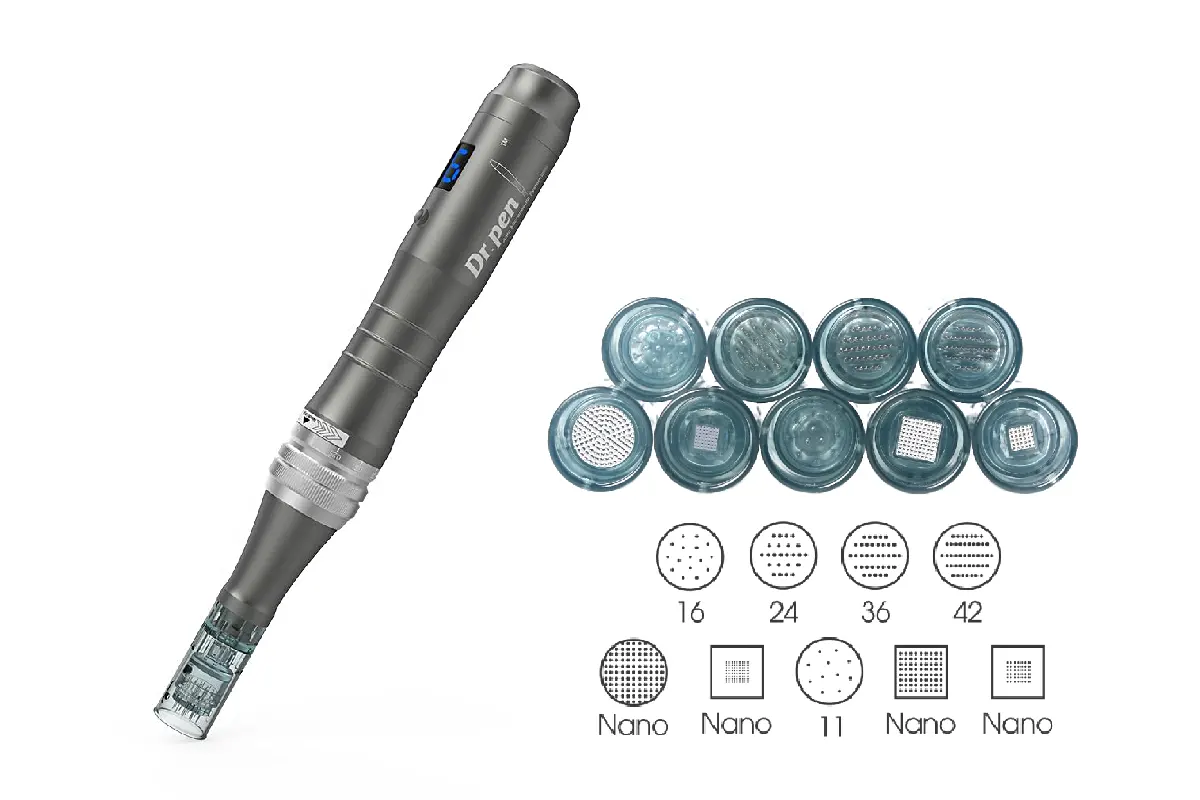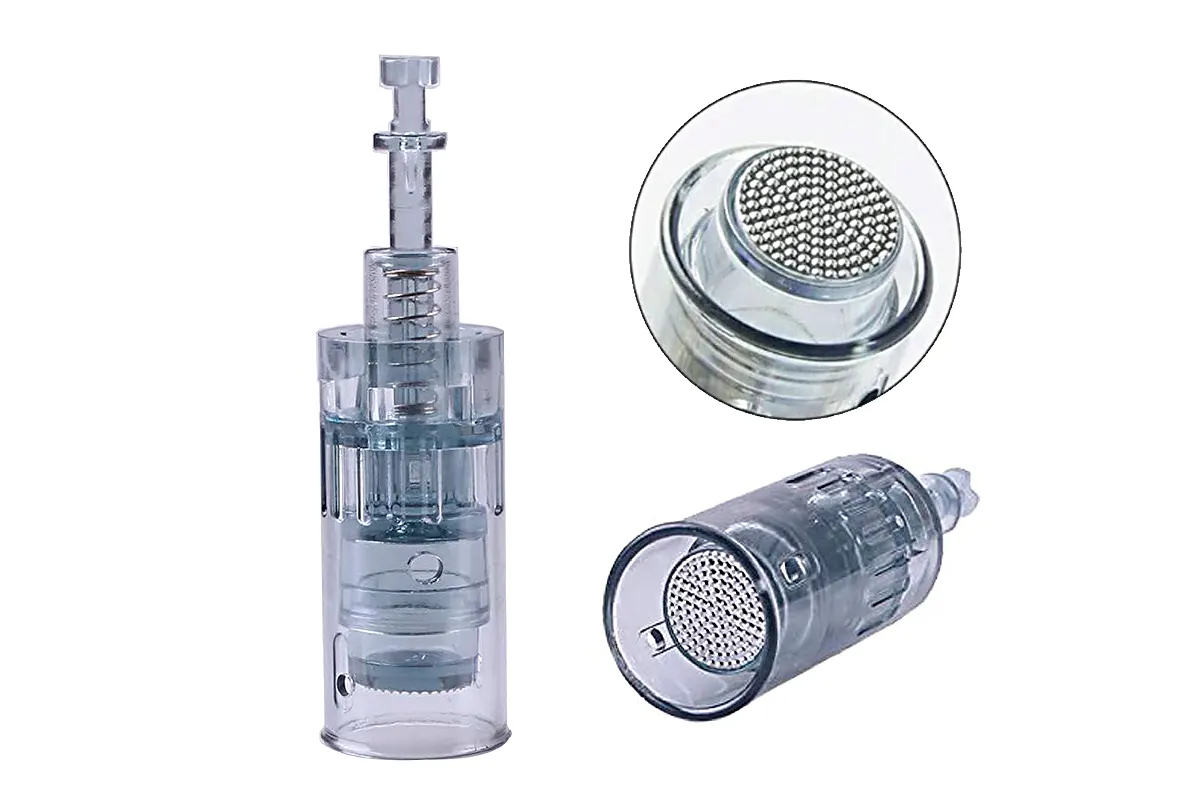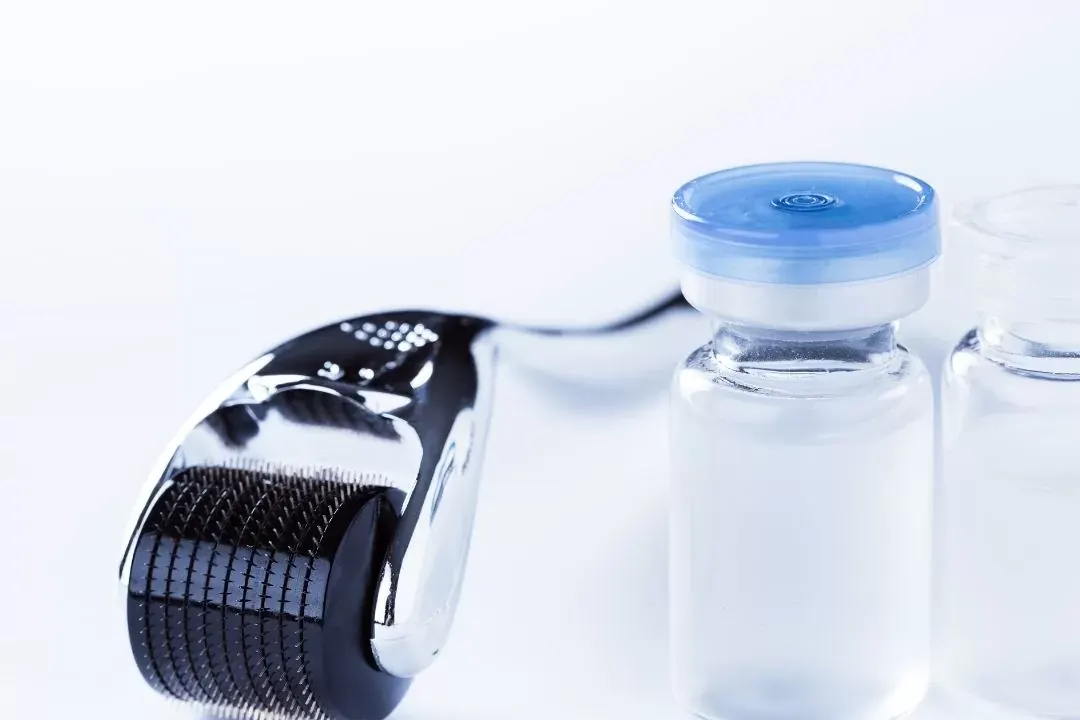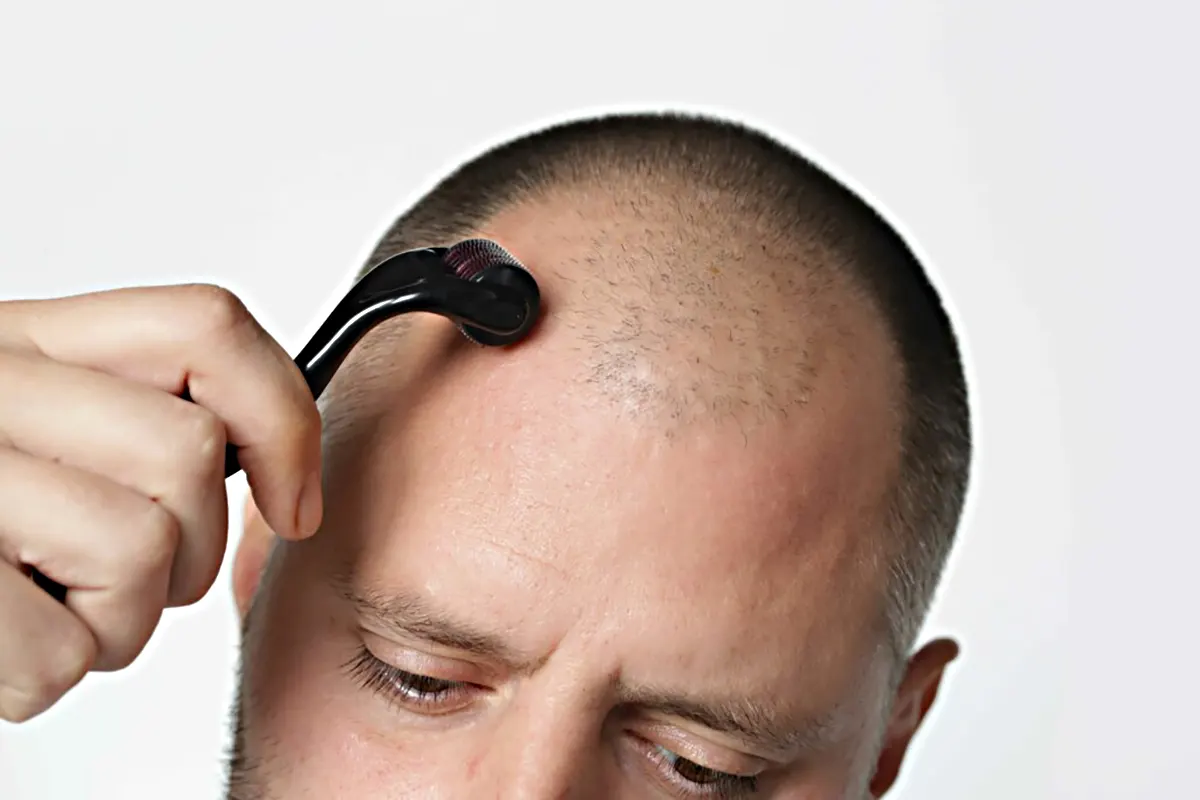If you want to work in the beauty retail industry selling under your own brand, then the easiest and fastest way is to find some good products from the market, add your logo to the products and customize your own packaging, then start selling the products under your brand.
Own branding helps you to differentiate your products from those of other businesses. If your products are always built with high quality and good design, customers will pay higher prices and remain loyal to your brand. Of course, your profits will be far greater than if you sell factory originals package or unbranded goods.
We have been exporting beauty tools products for many years and have extensive experience in printing private logos and custom packaging. Here, we will share some common ways of making logos, and you will understand which one is more suitable for your product.
The range of beauty tools is very wide, involving different materials like plastic, silicone, rubber, metal, wood, jade, glass, fabric, leather, and so on. For different materials, we can use different processes to print your logos, such as silk screen printing, pad printing, laser carving, mold marking, machine embroidery, hot stamping, UV printing, etc.
Below we will introduce these processes one by one.
Screen Printing
Screen printing is the most common and widely used method for adding your logo to product bodies and packaging. It can be applied to products made of almost all materials like plastic, glass, metal, jade, rubber, fabrics, etc. For example, in the below pictures, “PHILIPS” on the razor and “SEPHORA” on the ice globes are both made by the silkscreen methods.

Working Principle
Silk screen printing is a technique that uses a squeegee to squeeze the ink through the meshes on the screen to print the ink on the product.
First of all, we need to make a screen plate, and make all the meshes except the LOGO impermeable to the ink. The ink is poured on the screen before printing. When the scraper scrapes the ink with a certain pressure and angle, the ink passes through the mesh of the LOGO part and leaks on the product, forming a printed LOGO pattern. The remaining meshes on the screen plate have been blocked and the ink cannot leak out, forming a blank.
The most important components of screen printing are the screen, the squeegee, and the ink.

Advantages
- Any Pantone color can be specified, including gold or silver.
- The silk-screened logo has a certain thickness and a strong three-dimensional feel.
- A well-made silkscreen logo is strong and long-lasting, and it does not easily fade, scratch, or discolor.
- The screen printing method is suitable for large orders. If you are buying quantities of more than 500pcs at a time, screen printing is the easiest and cheapest way to add your private label.
- The actual production time of the screen printing process is very fast. But it takes 1~3 days before the official printing, which is the time to make the steel plate.
Disadvantages
- Screen printing can only print one color at a time. For multi-color patterns, separate stencils need to be made for each color and printed once individually, so the cost is much higher.
- For multi-color patterns, there is a possibility of overprinting, and most factories will refuse to use screen printing because overprinting is quite technically demanding, with a high labor cost and scrap rate.
- Screen printing cannot print gradient patterns. If you want to have a gradient logo on your product, you may need to do it with UV printing.
- The screen is flat or with a very little amount of deformation, so it requires the substrate surface to be flat or with little curvature. If the substrate surface is bent too much, the logo will be bent or deformed with the surface, or even the edge will be missed.
- The characteristics of silk screen printing determine that it can only be performed on the convex surface. If you need to have a logo on the concave surface, the screen printing will not be suitable, you can consider the UV printing method.
Cost
In most cases, one-color screen printing is available free of charge if your purchase quantity is over 1000~3000 units per order.
For small batches of one-color screen printing, there is usually a charge of around $60 for plate making and approximately $0.03/product for printing labor.
Pad Printing
Pad printing and screen printing use similar inks, but work on a different principle. The principle of pad printing is well understood like stamping, a stamp is dipped in ink and the pattern is then transferred to the paper.
First, the LOGO is engraved on the steel plate to form a groove, and the ink is then scraped into the groove with a scraper. Then the silicone pad will be firstly pressed on the steel plate, absorbing the ink in the groove, and then pressed on the surface of the product, leaving the ink there. Finally, the logo is formed after the ink is dried.
Feature
- Pad printing is similar to silk screen printing in terms of advantages, disadvantages and cost. Any Pantone color can be specified for the logo, including gold and silver. However, a gradient logo is not available either.
- The common pad printing machines are for single-color operation, and one color corresponds to one steel plate. For multi-color logos, multiple steel plates need to be made for multiple printing. The multi-color pad printing machine shown above is used for the logo printing, the efficiency is much higher, of course, at a higher cost.
- Compared to silk-screen printing, the ink layer of pad printing is thin and not as thick as the silk-screen logo, which has a three-dimensional feel.
- The screen printing method is suitable for large orders. If you are buying quantities of not more than 1000pcs at a time, screen printing is the easiest and cheapest way.
Cost
In most cases, one-color pad printing is available free of charge if your purchase quantity is over 1000~3000 units per order.
For small batches of one color pad printing, there is usually a charge of around $60 for plate making and approximately $0.03/product for printing labor.
Laser engraving
The working principle of laser engraving is to shoot the laser onto the surface of the substrate, the substrate surface absorbs the laser energy and produces a process of thermal excitation in the irradiated area, resulting in a rise in temperature, metamorphosis, melting, ablation, evaporation and other phenomena, thus forming the required logo mark.

Laser engraving is usually used on the surface of hard materials such as wood, metal, glass, plastic, jade, etc. It can be done very finely and accurately, and is permanent, giving your product a fairly high-quality appearance.
Feature
- Usually, laser engraving does not require a high MOQ as no stencils need to be made. Even one product can be laser marked for logo production, which is very suitable for small batch production. Of course it will be a little more expensive.
- One major disadvantage of laser marking is that the logo color made by this method is single. Since the color of the logo is determined by the surface material of the product, so you cannot specify the logo color yourself.
In addition, it should be noted that laser engraving cannot be used on ordinary plastic surfaces. It is necessary to add laser marking powder during injection molding so that laser engraving can be used to make logos on the surface of plastic products.
The main function of laser marking powder is to absorb the laser energy and convert the laser beam energy into heat energy, which produces thermal effects on the plastic surface, carbonization, evaporation, and chemical reactions resulting from the color change of the powder themselves, thus forming a logo on the product surface!
Cost
For mass production, laser engraving can cost you between $0.10 and $0.20 per unit, this cost is highly dependent on your order quantity and the size of your logo. Obviously, the larger the logo, the more time and energy it takes to laser print a logo.
Mold marking
Mold marking is the process of putting your personal label on the product mold, which means that the product comes with the logo when it is injected from the machine.
This solution can be used for any product that requires a mold to be used to produce it. For example, all plastic, rubber, silicone, glass, or metal products. The”FOREO” logo on the silicone facial brush is in this way, the logo is made in the silicone mold.

Feature
- The advantage of this solution is that your own branding looks more natural, it is already part of the product and is fully integrated into it.
- However, the high cost is its main disadvantage. Customizing your logo directly in the product mold means that you need to change the supplier's mold or even make a completely new one.
When purchasing a larger quantity, the cost of the mold spread over an individual product will be small. When you purchase a small quantity, the cost of making a logo for a single product can be so high that you would never choose this solution.
Cost
There is no additional cost to make the logo by this method, but the factory will charge you for changing the mold or creating a new one, depending on the product and the type of molding (e.g. injection molds, silicone molds, metal press molds, etc., each of which has a different price). It takes 15 to 20 days to make the molds and the time cost is also higher.
Bronzing process
The bronzing process uses the principle of hot pressing transfer to transfer the aluminum foil layer in the anodized aluminum to the surface of the substrate to form a special metallic effect.
Hot stamping / hot silver can be used on most products, whether it is plastic, metal, jade, glass, wood, fabric, leather, etc., this method can be used to make a logo on the surface.

Machine Embroidery
This type of marking is mainly aimed at marking on soft materials like fabric or leather, such as clothing, hats and bags. It is more durable, looks more premium and has no fading problems compared to screen printed logos. However, it costs more than screen printing.
In the beauty care tools industry, a number of products or parts of them are made of fabric or leather, such as shoulder massagers, massage pillows, packaging pouches, etc.

Both single and multi-color logos can be produced, the accuracy is determined by the embroidery machine and computer, much suitable for small batch orders. Even for multi-color logos, the alignment can be precisely controlled by the computer, without worrying about color registration problems.
The cost of machine embroidery is related to the size and complexity of the logo. In mass production, a typical single color 4x5cm machine embroidery costs around $0.20.
Compared to screening printing, pad printing and laser marking, embroidery is not suitable for small and delicate logos, and for logos with complex structures and smaller than 2cm, machine embroidery is not suitable.
UV Inkjet Printing
UV inkjet printing is a high-tech, plate-free, full-color digital printing technology that is not restricted by material. It can print on T-shirts, glass, plates, signs, crystal, PVC, acrylic, metal, plastic, stone, leather and other surfaces at photo level.
No plate making is required and the printing is completed in one pass. The colors are beautiful and rich, resistant to wear and tear, anti-UV, easy and convenient to operate, fast printing image, and fully compliant with industrial printing standards.

Due to the expensive equipment and high cost, UV inkjet printing is currently mainly used in the field of personalized customization, such as mobile phone case printing, furniture decoration, art decoration, and so on.
Conclusion
ROSEORCHID offers a wide range of brand logo production services for beauty tools products. Please see our “Logo Printing Service” page for more information about our services.









